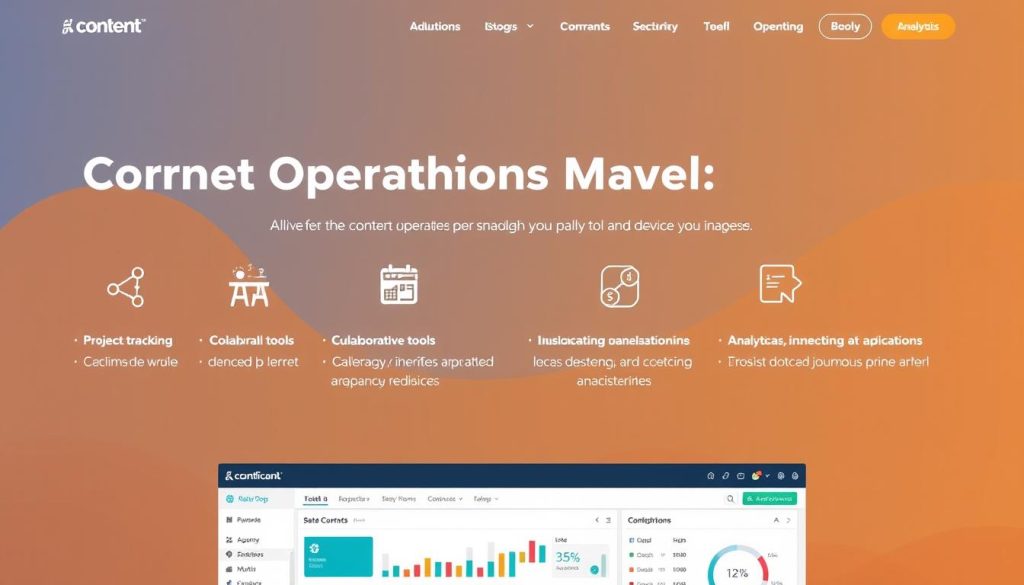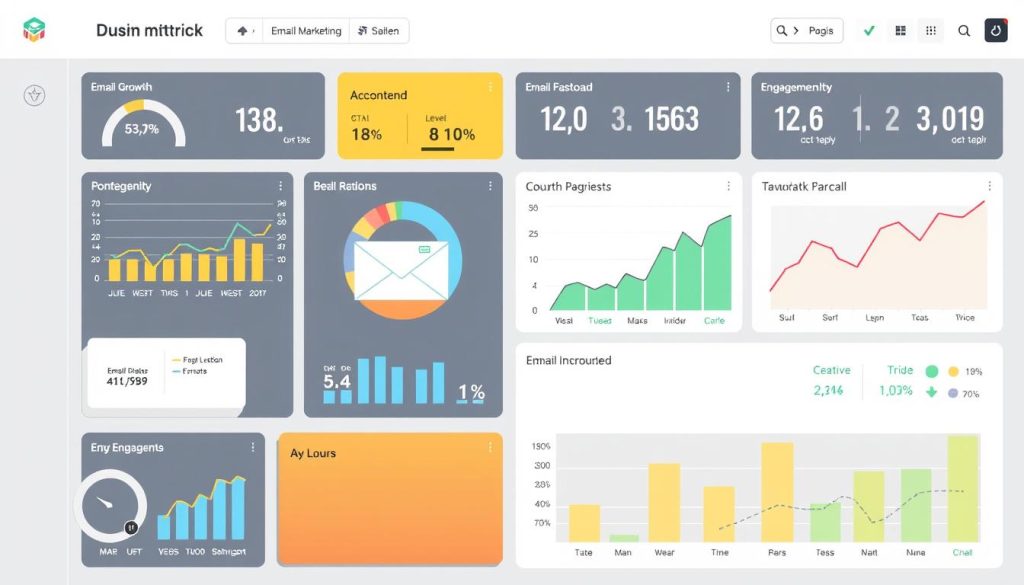As we navigate the ever-changing landscape of digital marketing, it’s clear that content marketing trends are shifting rapidly. In 2025, businesses must adapt to new technologies and approaches to stay ahead.
We’re seeing a significant transformation in how companies connect with their audiences, driven by AI integration, human-centric storytelling, and visual content. With 58% of marketers rating their strategy as only “moderately effective,” there’s a pressing need for innovative strategies that drive real growth.
To stand out in today’s crowded digital space, businesses require more than just content production – they need strategic thinking, authentic storytelling, and measurable results.
Key Takeaways
- Understanding the impact of AI on content marketing
- Leveraging human-centric storytelling for engagement
- The role of visual content in modern marketing strategies
- Measuring the effectiveness of your content marketing efforts
- Adapting to the latest trends for business growth
The Evolving Landscape of Content Marketing in 2025
The year 2025 is witnessing a seismic shift in content marketing, driven by technological advancements and changing audience expectations. As we navigate this new landscape, it’s clear that content marketing trends are not just about being innovative—they’re about survival in an increasingly competitive digital environment.

Businesses that fail to adapt their content strategies risk becoming invisible in a sea of digital noise, while those who embrace emerging trends gain significant competitive advantages. The most successful content marketers are those who can balance quality with consistency, leveraging new technologies while maintaining authentic human connections.
Why Staying Ahead of Content Marketing Trends Matters
Staying ahead of content marketing trends is crucial for businesses aiming to remain relevant. With 58% of B2B marketers rating their content strategy as merely “moderately effective,” it’s evident that there’s a significant room for improvement. The key lies in understanding the evolving needs of the audience and adapting strategies accordingly.
- The content marketing landscape has transformed dramatically, with AI tools becoming standard.
- Audience expectations have reached new heights, demanding more personalized and engaging content.
- Businesses must adapt to these changes to stay competitive.
Key Challenges Facing Content Marketers Today
Content marketers face numerous challenges, including resource limitations, difficulty measuring ROI, and the pressure to create content that drives action. According to recent research, nearly half of B2B marketers say their strategy struggles due to a lack of clear goals, and only one in three have a scalable model for content creation.
- Resource limitations hinder the ability to produce high-quality content consistently.
- Measuring the ROI of content marketing efforts remains a significant challenge.
- Creating content that drives action requires a deep understanding of the target audience.
AI Integration: Beyond Basic Content Generation

The integration of AI in content marketing strategies is becoming increasingly complex and nuanced. In 2025, AI is shifting from being a competitive advantage to a baseline expectation. The most successful marketers recognize that strategy must come first — clearly defining goals, understanding their audience, and setting measurable outcomes — before identifying where AI can amplify efforts.
AI has evolved far beyond basic content generation tools, becoming an integral part of sophisticated content marketing strategies. Leading businesses are now using AI not just to create content faster, but to enhance their entire content workflow—from ideation and research to optimization and distribution.
Strategic Implementation of AI in Content Workflows
Strategic implementation requires identifying specific areas where AI can add the most value, rather than applying it indiscriminately across all content processes. We’re seeing marketers use AI to analyze audience data at scale, identify content gaps, and personalize content experiences in ways that weren’t previously possible.
The most successful content marketing strategies recognize that AI should amplify human creativity, not replace it—they’re using AI to handle routine tasks while focusing human resources on strategy and creative direction.
Creating AI Guidelines for Your Organization
Creating comprehensive AI guidelines has become essential for organizations, covering acceptable uses, security measures, data handling, and transparency requirements. Organizations that fail to develop clear AI governance frameworks risk inconsistent content quality, potential ethical issues, and missed opportunities for innovation.
By implementing AI tools thoughtfully and developing robust guidelines, businesses can harness the full potential of AI in their marketing efforts, driving more effective content creation and distribution.
Human-Centric Content: The Competitive Edge
With AI-generated content on the rise, the brands that will stand out are those that can forge genuine emotional bonds with their audience. In 2025, making an emotional connection is going to be more important than ever, especially considering so much competing content will be lifeless, AI creations.

Emotional Connection in the Age of AI
The increasing prevalence of AI-generated content has paradoxically made authentically human content more valuable than ever before. Audiences can instantly recognize the difference between content created by humans and that generated by AI. Creating emotional connections through content isn’t just about being personable; it’s about understanding the genuine needs, challenges, and aspirations of your audience. Successful content marketers are focusing on vulnerability, specificity, and shared experiences to build trust in ways that AI simply cannot replicate.
Authentic Storytelling Techniques That Convert
Authentic storytelling is key to converting audience engagement into tangible results. Techniques include using real customer experiences, sharing behind-the-scenes insights, and addressing challenges honestly rather than presenting a perfect facade. The brands achieving the highest engagement rates are those that balance professional expertise with genuine human emotion, creating content that resonates on both rational and emotional levels. By developing a deeper understanding of their audience’s emotional triggers and pain points, marketers can create content that truly connects.
Human-centric content strategies are proving particularly effective in complex B2B environments, where building trust is essential for long sales cycles. By focusing on emotional connections and authentic storytelling, marketers can create a competitive edge that sets their brand apart in a crowded marketplace.
The “People Not Brands” Approach to Content
We’re witnessing a paradigm shift in content marketing, where personal connections are becoming more valuable than brand messaging. The “people not brands” approach has emerged as one of the most transformative content marketing trends of 2025, fundamentally changing how companies connect with their audiences.
This shift is driven by data that consistently shows content from individual team members generates significantly higher engagement than identical content posted through official brand channels. It’s clear that people trust people more than they trust logos, reflecting a broader consumer preference for authentic human connections over polished corporate messaging.

Leveraging Personal Brands Within Your Company
Forward-thinking companies are now actively encouraging and supporting their team members to develop their personal brands aligned with company values and expertise areas. This involves identifying natural communicators within the organization and empowering them to share their genuine expertise and experiences.
Organizations are creating formal programs to help employees share their knowledge and perspectives, providing them with training, guidelines, and content support. This strategy works particularly well on platforms like LinkedIn, where thought leadership from individuals consistently outperforms corporate content in terms of reach and engagement.
| Benefits | Traditional Brand Approach | “People Not Brands” Approach |
|---|---|---|
| Engagement | Lower engagement rates | Significantly higher engagement |
| Trust | Consumers trust corporate messaging less | People trust individual voices more |
| Reach | Limited by brand recognition | Expanded through personal networks |
Building Trust Through Human Connections
Building trust through human connections requires consistency, authenticity, and a willingness to share both successes and challenges. Audiences respond to real people sharing real experiences, making it essential for companies to foster an environment where employees can share their stories and expertise.
By doing so, companies can create a more personal and relatable content marketing strategy that resonates with their audience. This approach not only enhances engagement but also builds a loyal community around the brand.
First-Hand Expertise: Demonstrating Authority
Demonstrating first-hand expertise has become a cornerstone of effective content marketing. As search engines and audiences alike prioritize content based on genuine experience over theoretical knowledge, businesses must adapt to stay ahead.
Google’s emphasis on Experience, Expertise, Authoritativeness, and Trustworthiness (EEAT) has made documenting real experiences a strategic imperative for content that ranks well. We’re seeing successful marketers move away from generic, research-only content toward sharing specific challenges they’ve faced, solutions they’ve implemented, and results they’ve achieved.
Documenting Real Experiences in Your Content
Documenting real experiences doesn’t mean every piece must be a case study. It can include sharing process insights, lessons learned, or even mistakes made along the way. This approach not only satisfies search algorithms but also resonates deeply with audience who crave authentic insights rather than surface-level information.

Interviewing Subject Matter Experts
Interviewing subject matter experts has emerged as a powerful strategy for companies that want to demonstrate authority in areas where they may not have direct experience. The most effective expert interviews go beyond basic Q&A formats to extract unique insights, practical applications, and forward-looking perspectives that can’t be found elsewhere.
By leveraging first-hand expertise, businesses can create a virtuous cycle of trust-building with their people. This content marketing trend aligns perfectly with the growing consumer preference for transparency and authenticity.
Visual Content Strategies That Drive Engagement
In the ever-evolving world of content marketing, visual strategies have become a crucial differentiator. As the digital landscape becomes increasingly crowded, brands are turning to visual content to capture attention and drive engagement.

Custom Graphics and Infographics
Custom graphics and infographics have emerged as powerful tools for simplifying complex concepts and making data more digestible. By incorporating these visual elements, brands can increase content shareability across platforms and reinforce their brand identity.
- Visual content has evolved into a strategic necessity in 2025’s content marketing landscape.
- The human brain processes visual information 60,000 times faster than text.
- Custom graphics simplify complex concepts and increase content shareability.
Video Integration Across Platforms
Video integration has become non-negotiable for brands seeking to maximize their content marketing efforts. By creating tailored video content for each platform, brands can engage their audience more effectively.
- Video content is tailored for each platform rather than repurposed.
- Effective visual content strategies balance aesthetic appeal with genuine utility.
- Brands investing in high-quality visual content see higher engagement rates and improved conversion rates.
By incorporating these visual content strategies, marketers can stay ahead of the competition and drive meaningful engagement with their audience.
The Evolution of Search and SEO
The search landscape is undergoing a seismic shift in 2025, driven by AI-powered search engines and conversational queries. As a result, traditional keyword-focused SEO strategies are becoming obsolete, and content marketers must adapt to these changes to remain relevant.

Optimizing for AI-Powered Search
Optimizing for AI-powered search requires a deeper understanding of user intent and comprehensive topic coverage. Content must directly answer specific questions users are asking, making it essential to be the definitive source that AI draws from when generating responses. We’re seeing a shift towards creating content clusters around core topics and using schema markup effectively to enhance visibility.
Conversational Search and User Intent
The rise of conversational search is changing how users interact with search engines, with natural language questions becoming the norm. According to Microsoft data, traffic from generative AI searches converts significantly better than traditional searches because users are educated within the search platform before visiting websites. This evolution demands a more sophisticated approach to content creation, focusing on comprehensive expertise rather than keyword density.
By understanding and adapting to these changes, content marketers can improve their SEO strategy and stay ahead in the ever-evolving landscape of search and content marketing.
Original Research: Becoming “The Source”
As we move through 2025, original research stands out as a critical component of effective content marketing. By creating and sharing unique, data-driven insights, brands can establish themselves as authoritative voices in their industries. This approach not only enhances credibility but also drives significant engagement and backlinks.
Original research has emerged as one of the most powerful content marketing strategies in 2025, allowing brands to position themselves as authoritative sources rather than mere commentators. By conducting proprietary research through surveys, experiments, or analysis of internal metrics, companies can provide unique value that can’t be replicated by competitors or AI content generators.
Creating Data-Driven Content That Earns Backlinks
To create data-driven content that earns backlinks, brands must focus on rigorous methodology, transparent reporting of findings, and insights that challenge or expand current industry understanding. This involves identifying gaps in existing knowledge and answering questions that professionals are actively seeking information about. By doing so, brands can produce content that is not only valuable but also highly linkable.
| Key Elements | Description | Benefits |
|---|---|---|
| Rigorous Methodology | Transparent and well-documented research methods | Establishes credibility and trust |
| Transparent Reporting | Clear presentation of findings and data | Enhances reliability and authority |
| Insightful Analysis | Analysis that challenges or expands industry understanding | Drives engagement and backlinks |
Visualizing Research for Maximum Impact
Visualizing research effectively has become equally important as the research itself. By incorporating interactive elements, custom infographics, and data visualizations, brands can significantly increase engagement and shareability. This requires collaboration between content creators, data analysts, and designers to transform complex findings into compelling narratives that resonate with both technical and general audiences.
By focusing on original research and presenting it in an engaging, accessible manner, brands can become “The Source” in their industry, driving long-term traffic and establishing a strong authority that continues to attract backlinks over time.
Content Marketing Trends Reshaping User Experience
The intersection of content marketing and user experience is where the most successful brands are finding their edge in 2025. As user experience (UX) becomes increasingly intertwined with content marketing, we’re seeing a significant shift in how brands approach their content strategies. User signals, such as engagement time, bounce rate, and interaction patterns, are now crucial in determining content quality and relevance.

Technical Optimization for Better Engagement
Technical optimization has emerged as a critical content marketing trend, with page speed, mobile responsiveness, and accessibility becoming essential components of content strategy. The most successful content marketers are collaborating closely with technical teams to ensure their content is delivered through experiences that enhance rather than detract from the value they provide. Key aspects include:
- Optimizing page speed to reduce bounce rates and improve engagement
- Ensuring mobile responsiveness across various devices
- Implementing accessibility features to cater to a broader audience
Designing Content for Seamless Customer Journeys
Designing content for seamless customer journeys involves mapping content to specific stages of the buyer’s journey and creating logical pathways that guide users toward desired actions. This approach requires thinking beyond individual content pieces to consider how they connect and build upon each other, creating cohesive experiences rather than disconnected touchpoints. Key strategies include:
- Mapping content to the buyer’s journey stages
- Creating logical content pathways
- Fostering cohesive customer experiences
By integrating content marketing with user experience design, brands can significantly enhance engagement, conversion rates, and customer relationships. As content marketing trends continue to evolve, prioritizing user experience will remain a critical factor in achieving marketing success.
Streamlining Content Operations
Streamlined content operations are the backbone of successful content marketing strategies in today’s fast-paced digital landscape. As marketing teams continue to produce and distribute content across multiple channels, the need for efficient content creation and management processes has become increasingly important.

Content operations has emerged as a critical focus area for marketing teams, with streamlined processes becoming essential for maintaining quality while scaling production. Nearly half of B2B marketers report lacking a scalable model for content creation, highlighting a significant opportunity for competitive advantage through operational excellence.
Building Scalable Content Creation Models
Building scalable content creation models involves developing standardized templates, clear style guides, efficient approval workflows, and systematic quality control measures. The most successful content teams are implementing modular content approaches, creating reusable components that can be assembled in different ways to serve various channels and purposes.
Efficient Content Workflows and Processes
Efficient content workflows and processes are increasingly supported by specialized technology stacks that connect planning, creation, distribution, and measurement into seamless systems. This operational focus is enabling forward-thinking marketing teams to produce more high-quality content with the same resources, creating significant competitive advantages.
Strategic Content Repurposing
In 2025, content marketers are discovering that the real magic happens when they repurpose their content strategically across multiple channels and platforms. As the content landscape continues to evolve, strategic content repurposing has become an essential strategy for maximizing the return on content investments. This approach allows marketers to breathe new life into existing content, reaching wider audiences and extracting more value from their content creation efforts.
Content repurposing is not just about reusing content; it’s about maximizing its potential across different formats and channels. By adopting a strategic repurposing approach, marketers can ensure that their content resonates with diverse audience segments, regardless of their preferred consumption platforms.
Maximizing Value Across Multiple Channels
To maximize value across multiple channels, marketers must understand the unique characteristics, audience expectations, and content formats that perform best on each platform. This involves:
- Identifying the core message and key takeaways of the original content
- Adapting the content format to suit different platforms (e.g., turning a blog post into a video or infographic)
- Tailoring the tone, style, and pacing to match the audience’s preferences on each channel
By doing so, marketing teams can maintain consistent messaging while tailoring delivery methods to match how audiences consume content on different platforms.
Adapting Content for Different Platforms
Adapting content effectively goes beyond simple reformatting—it involves rethinking the presentation, pacing, and focus to align with platform-specific user behaviors. For instance, content designed for a professional platform like LinkedIn may need to be more formal and in-depth, while content for Instagram or TikTok should be more engaging and visually appealing.
The most sophisticated repurposing strategies create synergies between channels, using each platform’s strengths to drive engagement across the entire content ecosystem. By adopting a content atomization approach, where comprehensive pieces are systematically broken down into smaller, platform-specific assets, marketers can ensure a cohesive content strategy that maximizes reach and impact.
Video Content: Short-Form and Beyond
As we dive into 2025, it’s clear that video content has become an indispensable tool in the content marketer’s arsenal. The diversification of video platforms has created new opportunities for businesses to reach audiences with different content preferences and consumption habits.
We’re seeing a significant shift in how businesses approach content marketing, with video content driving substantial engagement and conversion. Both short-form and long-form formats are proving effective, catering to various audience needs and preferences.
YouTube Strategy for Business Growth
YouTube has emerged as a critical channel for business growth, with its status as the world’s second-largest search engine making it invaluable for discovery. To leverage YouTube effectively, businesses should focus on creating in-depth content that resonates with their target audience.
TikTok, Instagram Reels, and YouTube Shorts
Short-form video on platforms like TikTok, Instagram Reels, and YouTube Shorts has evolved from experimental to essential, proving particularly effective for awareness and top-of-funnel engagement. Businesses are adapting their marketing strategy to include these platforms, creating recognizable content that performs well across multiple channels.
Strategic Podcasting for Brand Authority

As content marketing continues to evolve, strategic podcasting has become essential for brands seeking to demonstrate their expertise and build trust with their audience. We’re seeing successful brands use podcasting as a platform for thought leadership, industry conversations, and authentic storytelling that showcases their expertise and values. The intimate nature of audio content creates unique opportunities for brands to develop trust and credibility with their audiences in ways that other formats cannot match.
Podcasting has evolved from a niche content format to a strategic asset for establishing brand authority and building deep audience relationships. This shift is driven by the growing demand for high-quality, engaging content that resonates with listeners. By leveraging podcasting, businesses can create a loyal community around their brand, driving long-term growth and customer loyalty.
Building an Audience Through Audio Content
Building an audience through audio content requires consistency, quality production, and valuable insights that listeners can’t easily find elsewhere. The most effective marketing strategies focus on specific niches where brands can demonstrate genuine expertise rather than trying to appeal to broad, general audiences. By targeting these niches, businesses can establish themselves as thought leaders and build a loyal following.
Repurposing Podcast Content Across Channels
Repurposing content across channels has become a critical component of efficient content marketing strategies. Single episodes can generate blog posts, social media clips, newsletter content, and more, extending the reach of podcast content while providing entry points for audiences who prefer different content formats. This multi-channel approach maximizes the value of podcasting efforts, ensuring that businesses get the most out of their content.
Email Marketing Renaissance
The year 2025 marks a pivotal moment for email marketing, as brands rediscover its power in delivering targeted, high-value content to their audiences.

Email marketing is experiencing a resurgence, driven by its ability to provide a controlled, direct channel to audience members who have explicitly opted in to hear from brands. As social media algorithms become increasingly unpredictable and third-party cookies disappear, owned channels like email have become more valuable than ever for consistent audience connections.
Building and Nurturing Subscriber Lists
Building and nurturing subscriber lists has become a strategic priority, with brands creating compelling lead magnets and value-driven signup incentives to grow their audiences. The most effective email strategies focus on delivering consistent value before making asks, establishing patterns of engagement that build trust and receptivity over time.
Personalization Strategies That Convert
Personalization has evolved far beyond simple name insertion, with sophisticated segmentation, behavioral triggers, and content customization creating truly relevant experiences for subscribers. Conversion-focused personalization strategies leverage data on subscriber behavior, preferences, and past interactions to deliver the right message at the optimal moment in the customer journey, ultimately helping to convert leads into customers.
Measuring Content Marketing Performance

Content marketing performance measurement has emerged as a critical capability for businesses in 2025. As we navigate the complex landscape of content marketing, accurately assessing performance is key to success.
We found that 56% of B2B marketers report difficulty attributing ROI to their content efforts. The most sophisticated content marketers have moved beyond vanity metrics like pageviews to focus on engagement quality, conversion paths, and business impact indicators.
Key Metrics Beyond Pageviews
The most effective content marketing strategies focus on metrics that truly matter. These include:
- Engagement time
- Scroll depth
- Return visitor rate
- Content-influenced conversions
- Customer journey acceleration metrics
By tracking these metrics, businesses can gain a deeper understanding of their content‘s impact.
Attributing ROI to Content Efforts
Attributing ROI to content efforts remains challenging but essential. We recommend using multi-touch attribution models and customer journey analysis to get an accurate picture.
By combining quantitative data with qualitative insights, businesses can understand the true impact of their content marketing strategies and make data-driven decisions to drive business results.
Implementing These Trends for Business Growth
By embracing the content marketing trends outlined, businesses can unlock new avenues for sustainable growth. Successfully implementing these trends requires a strategic, prioritized approach rather than attempting to adopt everything simultaneously. We recommend starting with an honest assessment of your current content marketing maturity and identifying the trends that align with your business objectives and audience needs.
Creating a phased implementation roadmap is essential, balancing quick wins with long-term strategic initiatives. For most businesses, beginning with operational improvements and measurement frameworks lays the groundwork for more advanced content marketing approaches. Integrating AI strategically, developing human-centric content, and enhancing user experience often yield immediate returns while positioning businesses for future growth.
The most successful organizations treat content marketing as a business growth engine, investing accordingly and holding their content initiatives accountable for measurable results. Regular review points should be included to assess progress, gather insights, and adjust strategies based on performance data and evolving market conditions. By thoughtfully implementing these content marketing trends, businesses can transform their content into a powerful driver of sustainable growth.
